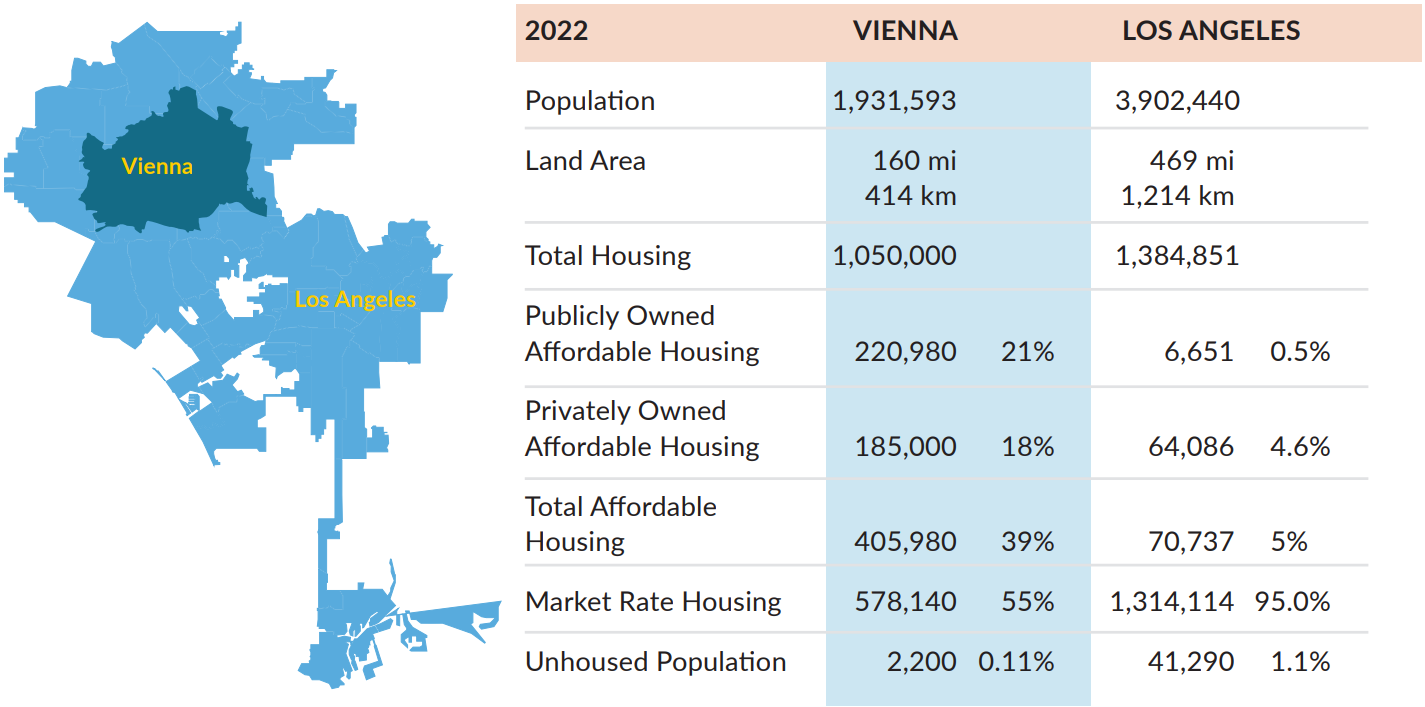What is Social Housing?
Housing Types in Vienna, Austria
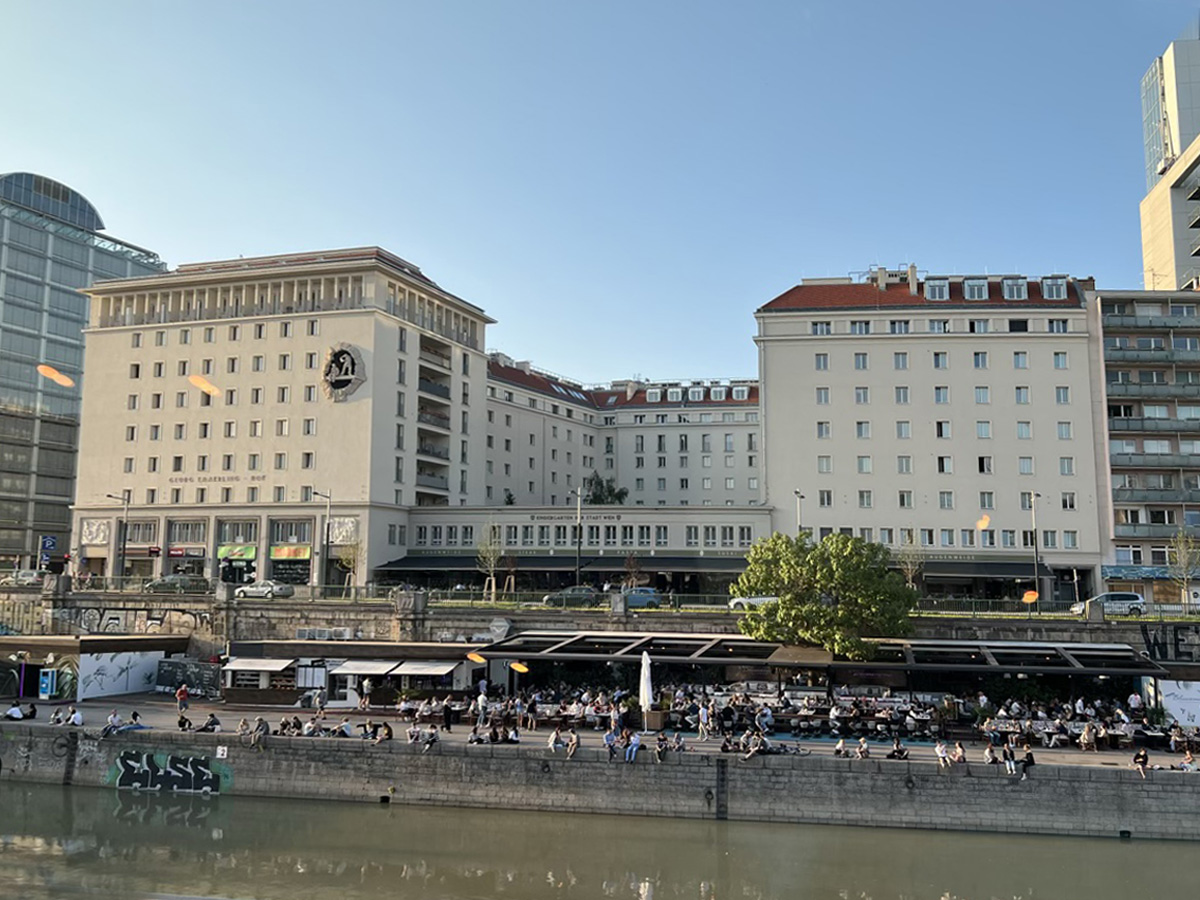
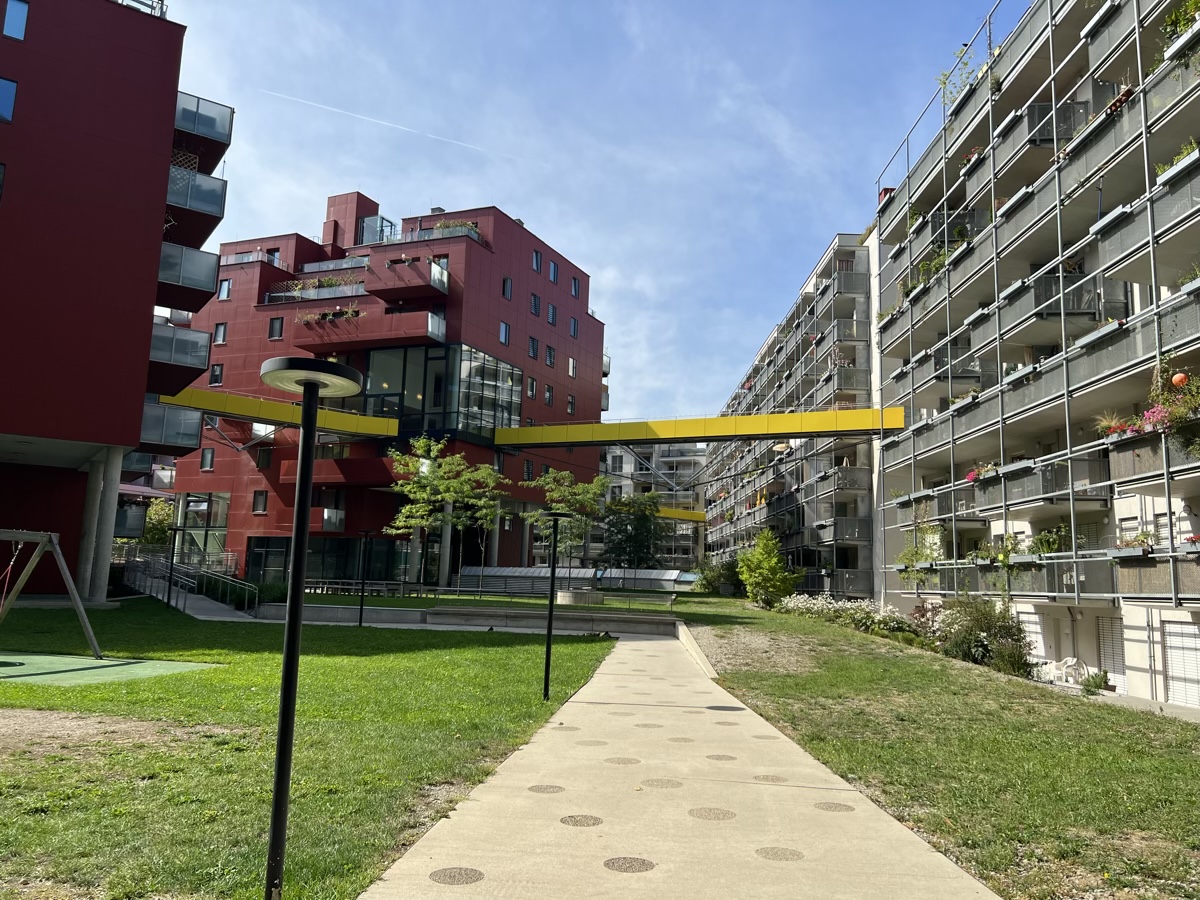
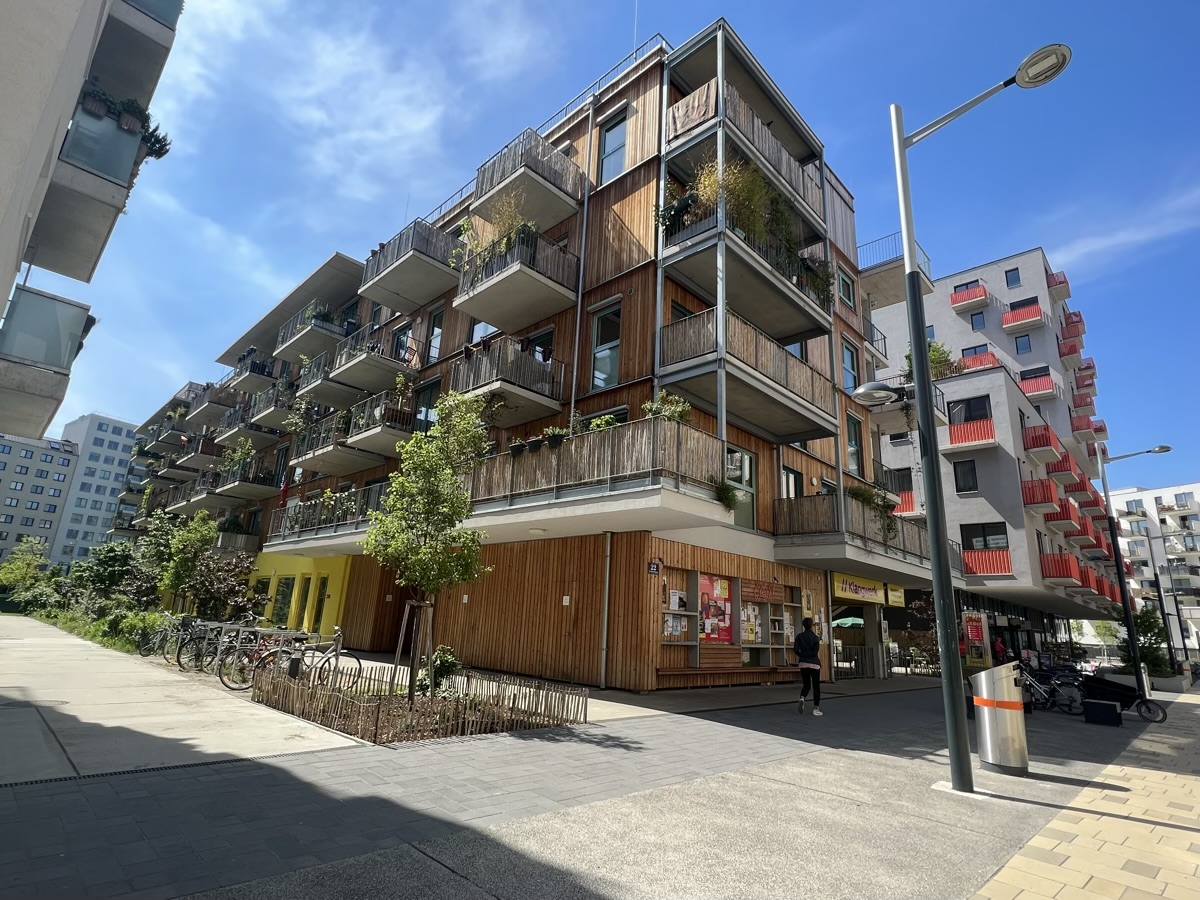
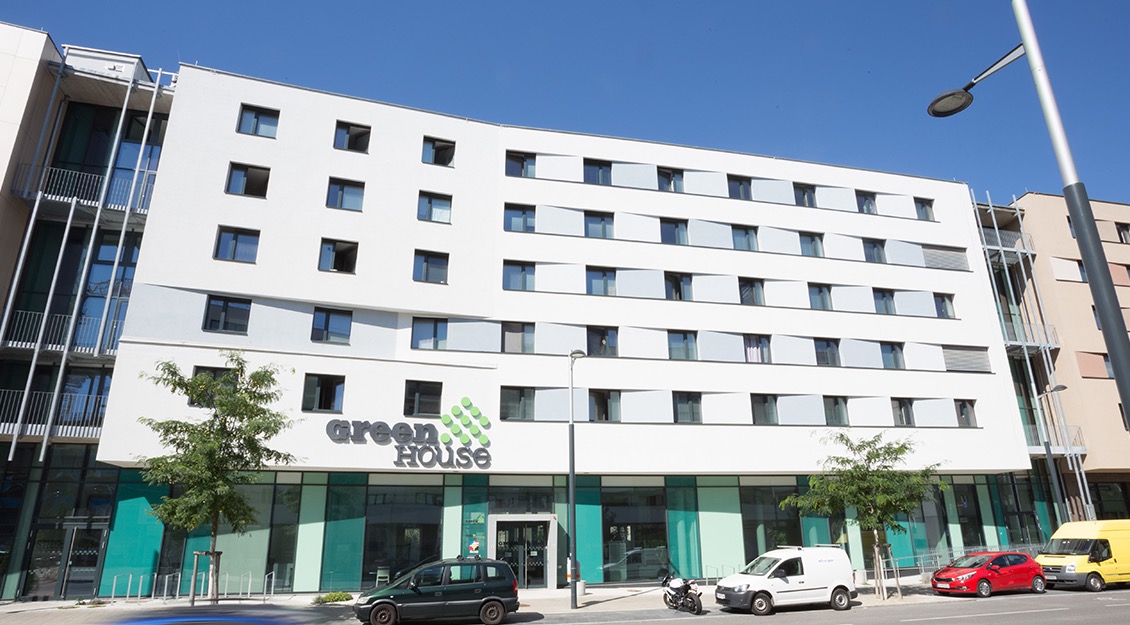
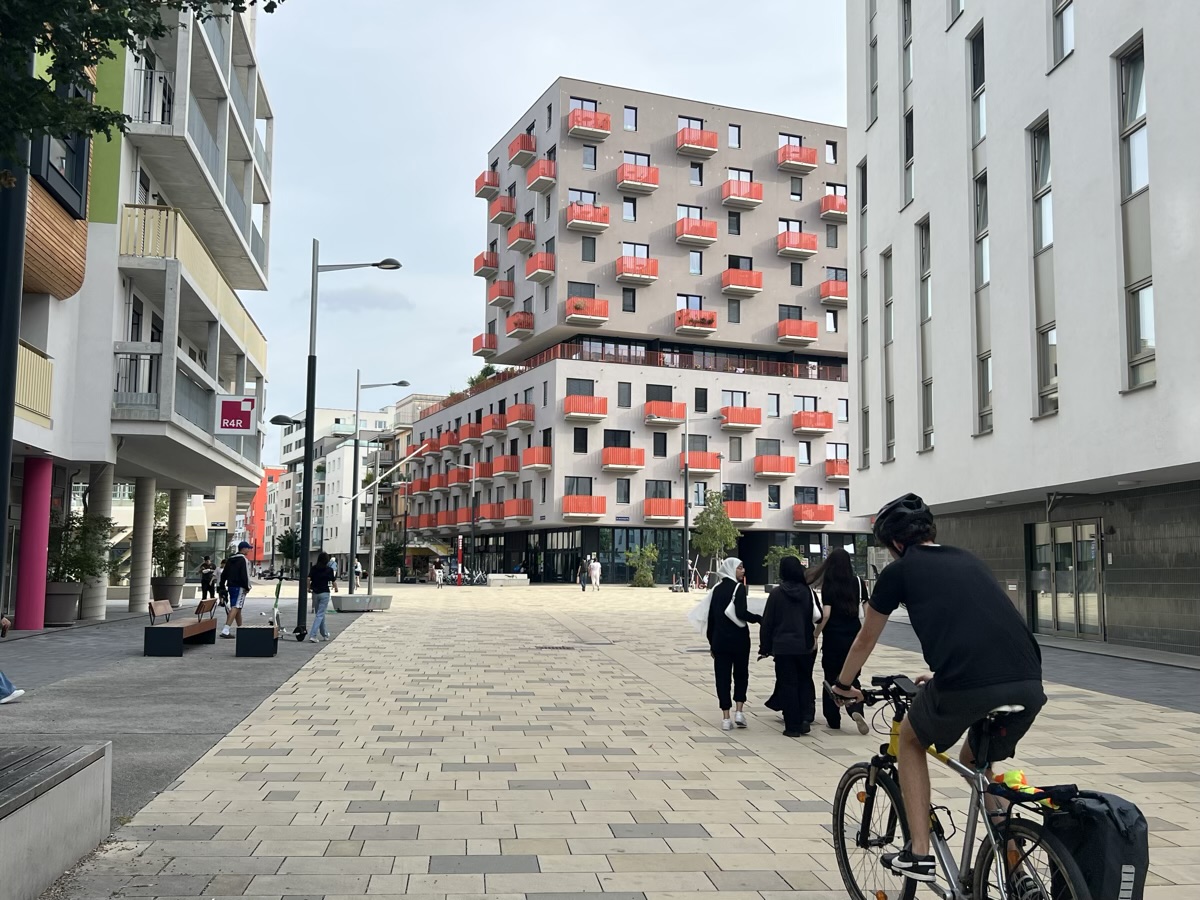
Key Facts & Figures: LA & Vienna Comparisons
City of Los Angeles and Vienna
City of Los Angeles and Vienna Housing Supply Comparison
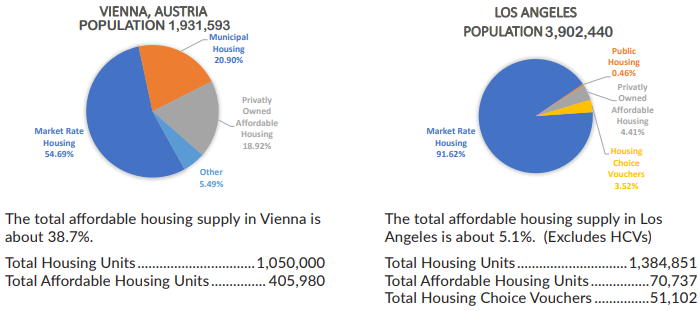
Vienna places significant emphasis on prioritizing the construction of affordable housing while Los Angeles lags significantly behind.
From 2011 to 2021, 107,456 housing units were constructed in the City of Vienna. During the same period, 16,713 units were demolished, resulting in a net production of 90,743 units. Today, social housing construction in Vienna, with a population of 2 million residents , averages about 7,000 units per year.
For comparison, California with a population of about 39 million, built 16,296 affordable homes built using Low Income Housing Tax Credits in 2023.
Ensuring Housing Security: The Role of Vienna's Three Housing Markets
Vienna has three distinct housing sectors: A private for-profit housing sector, a municipal or public-housing sector, and a limited profit housing sector. The municipal and limited-profit sector comprise approximately 43% of housing units in Vienna’s “Social Housing” system. While social housing comprises less than half of the housing units, the majority of Vienna’s residents live in social housing and are permanently insulated from market price fluctuations. Vienna’s sizable social housing sector ensures long-term affordability is available to Vienna’s residents. Furthermore, the significance of the social housing sector has a moderating influence on private market rents, creating greater affordability for the entire housing market in Vienna. Social housing is more than a type of housing, it’s a segment of the housing market that aligns housing costs in Vienna with the incomes of working people in Vienna.
A key feature of the two sectors that provide social housing is that they also include a robust social safety net and protections for tenants. For instance, a social housing tenant has the benefit of long-term housing stability, including the right to pass rental contracts to offspring in the event of one's passing. Open-ended leases provide tenants with a sense of permanence and stability. Additionally, in cases of financial difficulty, the City of Vienna offers assistance in securing more affordable housing options and provides rental support for deeply low-income residents.
Furthermore, the City of Vienna provides tenants with technical assistance – including relocation advice, rent support, and legal aid – to ensure no one is unnecessarily displaced. During periods of financial strain, the City of Vienna also helps tenants secure more affordable housing options or offers vouchers to support them. With various forms of social housing available, housing is accessible to 80% of Vienna's population. This system not only prevents homelessness but also cultivates a robust middle class, guaranteeing housing security for the majority of Vienna's residents.
Overall, the embedded tenant protections and safety net system provided through the social housing system provides a level of predictability and permanency that in the United States is often only associated with homeownership.
[4] EIU Global Liveability Index
[5] Baron, Harald, Ngoc Thi-Bich Doan, Justin Kadi & Leonhard Plank (2021) Wohnungspolitik und Wohnversorgung: Bericht aus fünf wachsenden europäischen Millionenstädten [Housing policies and housing conditions: Report from five growing European metropolises]. Stadtpunkte, Arbeiterkammer Wien: Wien.
[6] ACS 2021 5 Year: DP404 Selected Housing Characteristics
[7] Vienna Dept of Justice via briefing book
[8]LA County Superior Court eviction filings
[9] Nelson, Kyle (2023). A JUDICIOUS INVESTMENT: Right to Counsel Is a Cost-Effective Way to Solve Los Angeles’ Affordability Crisis and Keep Angelenos Housed
[10] GPLA Briefing book
[11] Ibid
City of Vienna’s Housing Type and Protections


